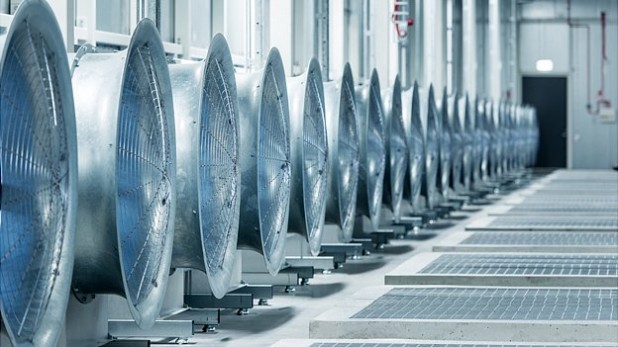A new industrial revolution
December 2013
A new industrial revolution is underway and we are in the thick of it, but most people haven’t noticed; what’s more, it shows some remarkable similarities to the last one.
What’s driving it is the astonishing growth in demand for storing and manipulating the avalanche of facts and figures that we generate as we move through the digital world; all that information is being collected, indexed and stored. One of the founders of Google claims that the amount of data we record every two days in 2013 is equal to all of the data that was recorded from the beginning of time to 2003. I think that’s exaggerating, but you get the picture.
Information is both the raw material and the by-product of the internet and we seem to want to keep almost all of it. However, we disguise the size of this job by talking airily of storing it in “the cloud”, which offers an agreeable picture of information floating around invisibly and quietly, waiting to be of service; a beneficent entity causing no more trouble than a gentle zephyr.
Unfortunately, the opposite is true; “the cloud” is a profoundly earthbound, industrial and commercial concern formed by datacentres all over the world. Just like Victorian steel mills, these datacentres take up a lot of space, soak up energy at a prodigious rate, generate heat and noise in gigantic quantities, employ people and are big earners of profits and exports.
Think of them like digital safety deposit boxes. There is almost certainly one near you, but you probably haven’t noticed. It will be a large, windowless, anonymous, industrial shed; very well secured (razor wire and guards) with no indication of what is going on there. Inside, you will see acres (yes, acres) of computers in rows; you will have to wear ear defenders because the noise is deafening; you’ll suffer in the heat they generate and you’ll freeze when you approach cooling fans the size of jet engines.
This is what the internet looks and sounds like; this is the modern industrial landscape. Just as the Victorian steel mills were, these loud, hot places are the engine rooms that are driving this latest industrial revolution.
The parallel doesn’t stop there; like Victorian steel workers, the numerous datacentre staff who sustain the flow of information are skilled people, but not geniuses; they are just like the skilled engineers that kept a Victorian steel mill going.
Like their Victorian forerunners, datacentres are also colossal users of natural resources. The numbers are enormous: one company with just four datacentres in Manchester is already using more electricity than all the Manchester hospitals put together. Facebook has just built a datacentre in Sweden, bigger than four Wembley football pitches, simply because of the cheap, clean hydroelectric power they can buy there.
 Cooling fans in the Swedish Facebook datacentre
Cooling fans in the Swedish Facebook datacentre
Some datacentres are even buying more power than they need, just to be sure that when they expand they’ll have enough (and to stop their competitors getting it). The bigger ones are even building their own power stations.
The availability of power, cooling and good digital links is dictating where datacentres are built, just as Victorian industries needed nearby coal and water and relied on the canals to move raw materials and products around.
On top of all this is the question of trust. The USA’s formidable Patriot Act is proving good news for UK based datacentres; this terrifying law can allow American security services to examine any data stored on American soil. Many UK companies and government departments don’t like the sound of this (I don’t blame them), and are bringing their data back home, creating still more demand for storage space.
The new industrial revolution is underway; it’s all around you, and growing fast.
Here is a short video from Google which gives an idea of the scale of one of these datacentres:

